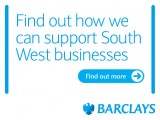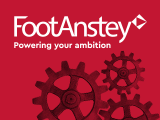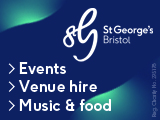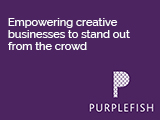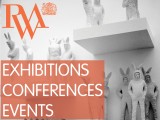Bristol’s long-awaited arena will create nearly 400 jobs and contribute more than £150m to the region’s economy, mayor George Ferguson has said as he unveiled more details of his for vision to build the much-delayed venue.
The 12,000 capacity arena will open on disused land near Temple Meads station in 2017, bringing a huge cultural and economic boost to the city, according to Mr Ferguson's plans.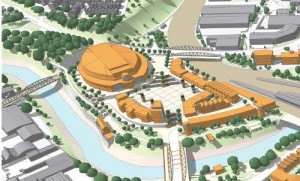
But he admitted there was still a funding hole in the business case for the £90m project, which will be presented to the cabinet next January and full council the following month when it fixes its annual budget.
The city council has already earmarked £34m from the revenue it will receive from the arena operator and secured £25m from the City Deal, the pot of Government money given to local authorities for major development and infrastructure projects. A further £3.8m is expected to come from the arena operator as a lump sum.
But it will need to raise a further £27.5m to get the project off the ground – a sum Mr Ferguson and his team believe they can secure from the West of England Local Enterprise Partnership (LEP), the private sector led body that channels Government funds such as the City Deal.
Mr Ferguson said he was “fairly confident” that the LEP will put more funding from the City Deal into developing the arena. The mayor will present his bid for the additional funding to the LEP board in November. Other funding options, including land disposals– which had to remain confidential – were being examined, he said.
Speaking about the Arena project, the mayor insisted: “This will happen. It's a no-brainer. The actual direct cost is lower than we expected.”
He said he expected the city council to include £1.2m in next year's budget to pay for preparity work for the arena. “The arguments for it are tremendous such as its cultural impact and job creation. It's a perceived weakness of the city [not to have an arena].”
And throwing down a political gauntlet to councillors, he added: “If the council votes against these plans, they will have to face the city and explain why.”
However, sources close to the mayor said if the land disposal and other fundraising projects now being considered were completed then the arena could go ahead without a penny of council taxpayers' money.
A bid for £40m funding through the Regional Growth Fund for the arena was rejected in July.
Plans for a Bristol Arena have been discussed for more than a decade and a number of false starts have been made, including by the now-abolished Regional Development Agency which started work at the Temple Meads site.
Mr Ferguson said the delays, while disappointing, may be advantageous. “This will be a much better arena than the one planned 10 years ago,” he said.
The arena will have 10,000 seats arranged in a horseshoe shape around a stage with space for a further 2,000 standing spaces, according to the plans revealed today.
Bristol is the largest UK city without a major entertainment venue – a fact that Mr Ferguson believes has damaged the local economy. The city has been unable to attract global touring stars and major international events, forcing its residents to travel to Cardiff, Birmingham or London.
“It is crystal clear that Bristol needs an arena and I welcome the findings of the business case which matches my ambition,” he said, adding that the city was "the last frontier" for arenas.
“We should have delivered an arena years ago but as the only major city without one we can now take advantage of learning from all that have gone before.
“This is an absolute imperative as far as the people of Bristol are concerned and it is heartening that the business case demonstrates even more clearly that it makes absolute economic sense for Bristol and the whole region to move forward with this plan.”
Mr Ferguson promised in his election campaign to deliver the arena by 2016. The revised timetable of an opening in the first half of 2017 could be delayed if the funding requirements aren’t met, the mayor admitted.
A team from the Bristol office of AECOM (formerly Davis Langdon), the city council’s cost consultant and employer’s agent on the project, has worked on the business case over the past three months with Liverpool-based AMION Consulting producing a detailed economic impact. Their reports form the basis of the case for the arena to be presented by the mayor to the city council.
Their conclusion is that a 12,000-capacity arena on the former diesel yard site next to Temple Meads station will create 274 permanent jobs in Bristol and a further 113 across the wider West of England in ancillary services such as hotels and restaurants as many event-goers are likely to be from outside the region. Some 2.2m adults live within an hour's drive time of the arena site – although event-goers will be encouraged to use public transport.
The report also says Bristol “can anticipate a clear return on any financial investment” with £110.9m added to the city economy over 25 years from the arena’s opening with a further £46m going to the wider region.
This is set against a total project investment of around £80.2m in the arena and £8.1m for surrounding infrastructure including roads, shops and other facilities.
The economic impact of an arena on the site would be greater than using it for any other commercial development, the mayor said.
At present Bristol’s largest music and entertainment is the 02 Academy with 2,500 seats. While Bristol City’s Ashton Gate stadium can seat 25,000, such open-air venues can only stage one or two concerts a year.
The nearest arena-size venue is the Motorpoint Arena in Cardiff which has a capacity of 5,000 seated and 7,500 standing.
Ten locations across the UK have arenas with a capacity of at least 12,000. “The nearest to Bristol is 95 miles away in Birmingham. It’s staggering there isn’t one closer to Bristol,” said Mr Ferguson.
Research by the consultants showed that the rise of TV show-related events such as those based on the X-Factor and Strictly Come Dancing had proved popular in major arenas along with gigs by touring bands and artists as well as star comedians. Attendances at UK arenas had averaged around 10m people a year over the past six years.
Mr Ferguson said the arena had been 'soft marketed' to potential operators who had confirmed it could sustain a viable revenue stream.
The preferred seating arrangement – 10,000 seats and standing space for 2,000 people arranged in a horseshoe space – offered the greatest flexibility, said Mr Ferguson, and meant the arena could stage events such as major basketball tournaments. Some seating could be screened off to allow smaller, community events to take place at the arena. The venue will include 20, 12-seater private boxes and hospitality facilities for 400 guests.
Most visitors will be expected to travel to the arena by public transport. There will be very little on-site parking, which will be mainly for staff, VIPs and disabled people. Those driving to the arena will use park and ride or car parks within a 15 minute walk of the site.










